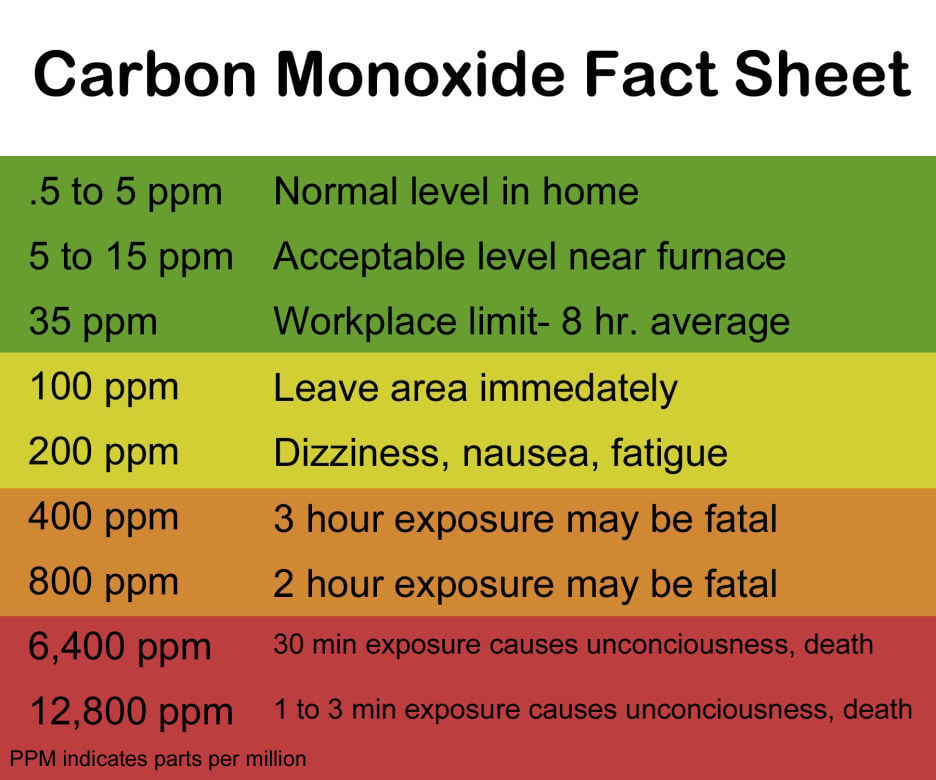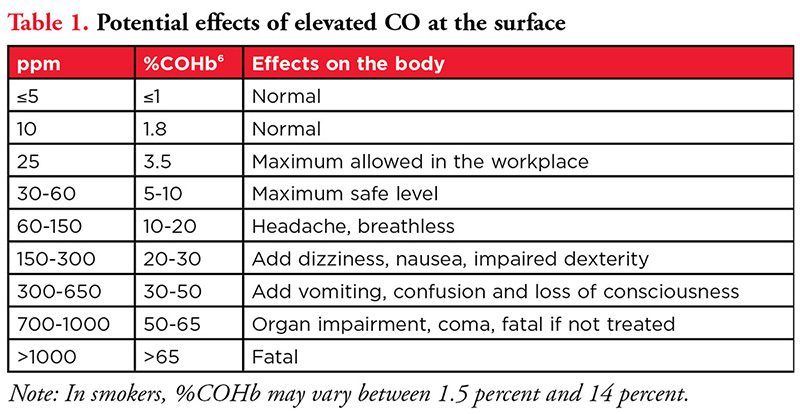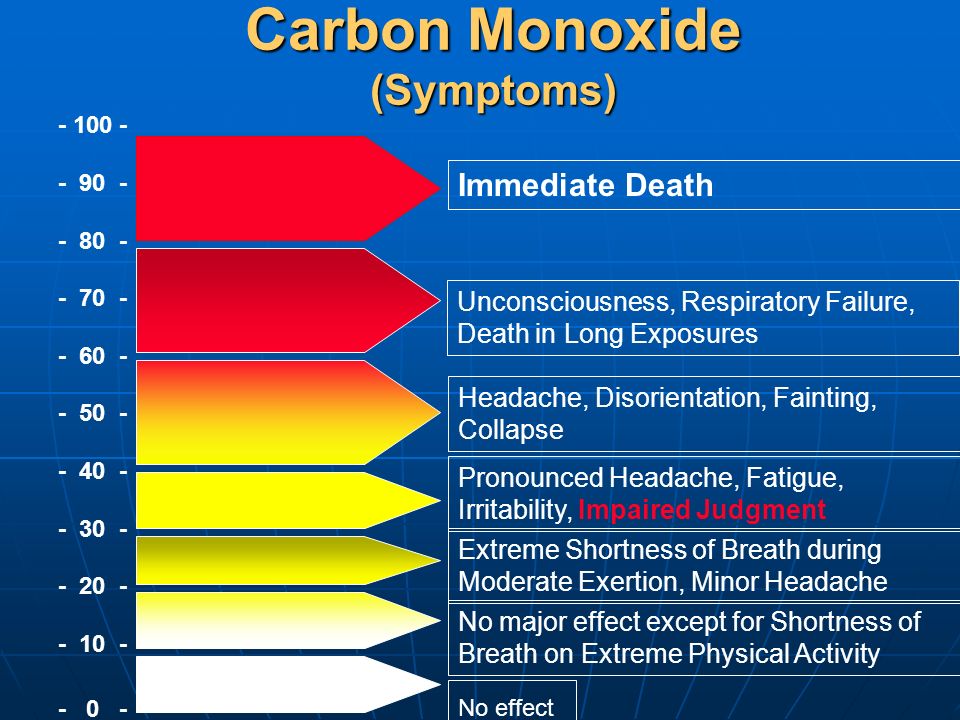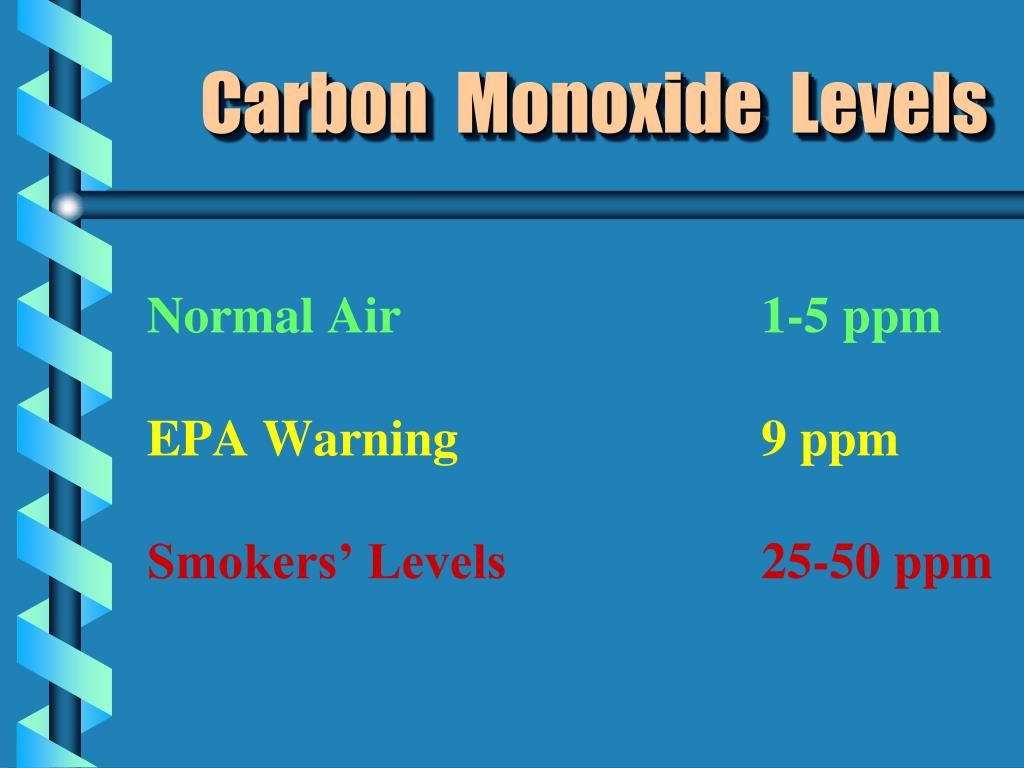What Is The Normal Carbon Monoxide Level

Carbon monoxide (CO) is an odorless, colorless gas that can be deadly. It's produced by the incomplete burning of fuels like natural gas, propane, oil, wood, and even gasoline. While modern homes are designed to minimize CO buildup, appliance malfunctions can lead to dangerous levels. Understanding what constitutes a normal CO level and how to address potential problems is crucial for your family's safety.
The Silent Threat: Understanding Carbon Monoxide
Before diving into troubleshooting, let's clarify what constitutes a normal CO level. Generally, background CO levels in a home, even with properly functioning appliances, can range from 0-9 parts per million (ppm). Most CO detectors trigger an alarm at 70 ppm or higher. However, even lower levels can cause symptoms in sensitive individuals or with prolonged exposure.
The Environmental Protection Agency (EPA) sets the standard for safe indoor air quality. They recommend keeping CO levels as low as possible. If your CO detector ever goes off, immediately evacuate the premises and call emergency services.
Common Culprit: A Failing Gas Furnace
A common source of CO leaks is a malfunctioning gas furnace. Furnaces rely on burning natural gas to generate heat. If the combustion process is incomplete, due to faulty components, insufficient airflow, or improper venting, CO can be released into your home.
Troubleshooting a Gas Furnace: A Step-by-Step Guide
Important Safety Note: If you suspect a CO leak or smell gas, immediately evacuate your home, contact your gas company from a safe location, and do not operate any electrical appliances or light switches. If you are even slightly unsure or uncomfortable performing any of these steps, call a qualified HVAC technician immediately.
Step 1: Preliminary Checks (No Tools Required)
- Check Your CO Detectors: Ensure they are functioning correctly. Test them regularly using the test button. Replace batteries annually (or as needed) and replace the entire detector according to the manufacturer's instructions (usually every 5-7 years). Make sure you have detectors on every level of your home, especially near sleeping areas.
- Visual Inspection of the Furnace Area: Look for any obvious signs of damage around the furnace, such as rust, soot buildup, or loose connections. Note any unusual smells (besides the typical furnace smell upon startup).
- Inspect the Vent Pipe: The vent pipe (often made of metal) carries exhaust gases away from the furnace. Ensure it is securely connected to both the furnace and the chimney. Look for signs of corrosion, damage, or disconnections. Even a small separation can allow CO to leak into your home.
- Check for Obstructions: Make sure nothing is blocking the airflow around the furnace. This includes furniture, boxes, or debris. Proper airflow is essential for efficient combustion.
- Filter Check: A dirty air filter restricts airflow, which can affect combustion. Replace your air filter regularly (usually every 1-3 months, depending on usage). A clogged filter is a common cause of furnace problems.
Step 2: Basic Troubleshooting (DIY with Caution)
Remember: If you are uncomfortable with any of these steps, call a professional.
- Power Cycle the Furnace: Turn off the furnace at the circuit breaker. Wait a few minutes, then turn it back on. This can sometimes reset the furnace's control board and resolve minor issues.
- Check the Pilot Light (for older furnaces): Some older furnaces have a pilot light. If the pilot light is out, follow the manufacturer's instructions to relight it. Be extremely careful when working with gas. If you are unsure, call a professional. Most modern furnaces have electronic ignition and don't have pilot lights.
- Thermostat Settings: Ensure your thermostat is set correctly and calling for heat. Sometimes a simple thermostat malfunction can prevent the furnace from operating properly. Try increasing the set temperature significantly to see if the furnace kicks on.
- Inspect the Flame Sensor (for electronic ignition furnaces): The flame sensor is a small metal rod located near the burner. It senses the presence of a flame and allows the furnace to continue operating. If it's dirty, it may not sense the flame correctly, causing the furnace to shut down prematurely. To clean it:
- Turn off the furnace at the circuit breaker.
- Locate the flame sensor. It's typically a small, curved metal rod near the burner assembly.
- Carefully remove the flame sensor. It's usually held in place by a screw or clip.
- Use a piece of fine-grit sandpaper or steel wool to gently clean the metal rod. Remove any carbon buildup or residue.
- Reinstall the flame sensor and turn the furnace back on.
Step 3: When to Call a Professional
The following issues require a qualified HVAC technician:
- Any suspicion of a gas leak. Gas leaks are extremely dangerous.
- Unusual noises coming from the furnace (banging, grinding, etc.). These noises often indicate mechanical problems that require professional repair.
- Persistent CO detector alarms, even after basic troubleshooting. This indicates a serious problem that needs to be addressed immediately.
- Difficulty starting the furnace, even after power cycling. This could indicate a problem with the ignition system or other critical components.
- Visible damage to the heat exchanger. The heat exchanger is a critical component that separates the combustion gases from the air circulating through your home. Any cracks or damage can allow CO to leak into your living space. Inspect the heat exchanger for rust, corrosion, or cracks. This often requires removing panels and using a flashlight. If you see any damage, immediately call a professional. Do not attempt to repair it yourself.
- Complex electrical issues. Troubleshooting electrical problems in a furnace requires specialized knowledge and equipment.
- Any work involving the gas line or gas valve. These components should only be handled by qualified professionals.
- You are not comfortable performing the troubleshooting steps. It's always better to be safe than sorry.
Other Potential Sources of Carbon Monoxide
While gas furnaces are a common culprit, other appliances can also produce CO:
- Gas water heaters: Similar to furnaces, gas water heaters rely on combustion. Ensure proper venting and regular maintenance.
- Gas stoves and ovens: While designed to be used indoors, improper combustion can lead to CO buildup, especially in poorly ventilated kitchens. Never use a gas oven or stovetop as a primary heating source.
- Fireplaces (wood-burning and gas): Proper venting is crucial. Have your chimney inspected and cleaned annually. Ensure the damper is fully open when using the fireplace.
- Portable generators: Never operate a portable generator indoors or in enclosed spaces like garages, even with the door open. Generators produce high levels of CO.
- Cars: Never run a car in a garage, even for a short period. CO can quickly build up to dangerous levels.
Preventative Measures for Carbon Monoxide Safety
Prevention is key to ensuring your family's safety from CO poisoning:
- Install and maintain CO detectors: This is the single most important step.
- Regular appliance maintenance: Have your gas appliances inspected and serviced annually by a qualified technician.
- Proper ventilation: Ensure adequate ventilation in your home, especially when using gas appliances.
- Never use gas appliances for unintended purposes: Do not use a gas oven or stovetop to heat your home.
- Be aware of CO poisoning symptoms: Headaches, dizziness, nausea, vomiting, shortness of breath, confusion, and loss of consciousness are all potential symptoms of CO poisoning. If you suspect CO poisoning, immediately evacuate your home and seek medical attention.
- Educate your family: Make sure everyone in your household understands the dangers of CO and knows what to do if the CO detector goes off.
Interpreting CO Detector Readings
Understanding your CO detector's readings can help you take appropriate action.
- 0-9 ppm: Generally considered a normal background level. No immediate action is required.
- 10-30 ppm: This level may indicate a potential problem. Investigate the source and ensure proper ventilation. Monitor the situation closely.
- 31-69 ppm: This level is elevated and requires immediate attention. Turn off potential sources of CO, ventilate the area, and call a qualified technician.
- 70 ppm or higher: This level is dangerous. Evacuate the premises immediately and call emergency services (911).
Conclusion
While dealing with potential CO hazards can seem daunting, understanding the basics and taking proactive steps can significantly reduce your risk. By regularly checking your CO detectors, maintaining your appliances, and being aware of the symptoms of CO poisoning, you can create a safer home environment for your family. Remember, when in doubt, always err on the side of caution and call a qualified professional. Your family's safety is worth it.










